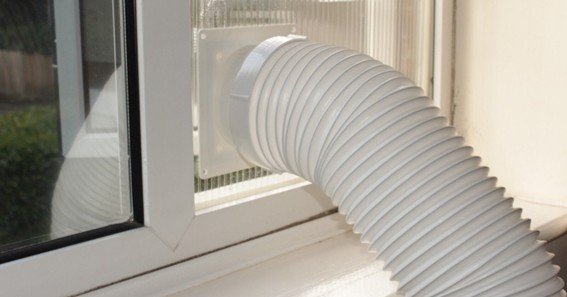Why You Really Need an ac window kit in 2025
Portable air conditioners can’t dump hot air without a properly sealed ac window kit—and a loose DIY board can slash cooling efficiency by up to 35 percent. Modern kits add insulated panels, multi-diameter hose couplers, and tool-free locks that curb energy loss and noise while keeping summer bugs out.
Top AC Window Kit Releases of 2025
| Kit | Best For | Length Range | Hose Ø Support | Price* | Stand-out Feature |
|---|---|---|---|---|---|
| Kifiray Seamless-Slot Universal | Renters with/ sliders | 17–61 in | 5.1 & 5.9 in (dual coupler) | $27.99 | Grooved PVC panels click together gap-free |
| TURBRO 707-90-062 | Quick no-drill installs | 11–61 in | 5.9 in | $40.60 | Clockwise & anticlockwise hose collar; 90-day returns |
| Martinson Custom Plexiglass | Casement / historic windows | Cut-to-size | Any (specify at order) | from $119 | ¼″ clear acrylic; “Perfect Fit” remake guarantee |
| Midea OEM Sub-Assembly 12020600A00261 | Midea Duo & sister models | Fixed panel | 5.9 in | $36.95 | Factory part ships in 48 h, keeps warranty intact |
| EcoFlow Wave 2 Car Vent Kit | Van-life & RV doors | Flexible fabric | Dual hoses | ≈ $35 | Velcro straps clamp to the vehicle window for mobile cooling, Reddit |
*USD street prices, April 2025. Availability can vary in peak-heat months.
How to Choose the Right AC Window Kit
-
Window style: Sliding sash panels are fastest, but casement/awning windows need side-hinge acrylic inserts.
-
Hose compatibility: Check if your unit uses a single 5.9″ hose or a newer hose-in-hose (e.g., Midea Duo); pick a kit with the correct coupler or an adapter plate.
-
Panel material: PVC is light and cheap; aluminum adds rigidity; insulated acrylic blocks radiant heat and keeps the view.
-
Seal integrity: Look for foam tape, seamless slots, or embedded gaskets that stop back-drafts—Kifiray’s groove joint is a good example.
-
Portability: Fabric zipper sleeves (good for travel) fold to backpack size, whereas rigid panels may need off-season storage.
Installing an AC Window Kit: Step-By-Step
-
Measure twice: Record sash travel or hinge clearance before purchase.
-
Dry-fit panels: Extend or stack sections until they fill the opening flush.
-
Add weather-strip: Apply foam where the frame meets the panel.
-
Secure hose adapter: Twist-lock or screw the collar into the panel.
-
Test for leaks: With the AC on high, run a candle flame or incense around joints; flicker signals escaping air—re-seal as needed.
Maintenance & Upgrade Tips
-
Clean lint from the hose collar monthly to maintain airflow.
-
Swap to reflective or insulated panels if west-facing windows get direct sun.
-
For year-round use, choose a kit with quick-release thumbscrews to remove the panel in winter.
FAQ
-
Will any kit work if my window is over 61 inches tall?
No—look at custom acrylic options or add-on extension plates; Martinson cuts panels up to 84 inches on request. -
What’s the difference between a universal kit and an OEM kit?
OEM kits (like Midea’s) match the unit’s exhaust collar exactly and preserve warranty, but universal kits fit multiple brands with interchangeable couplers. -
How do I seal a casement window that swings out?
Use a side-hinge acrylic insert that sits in the frame while the sash remains locked against it; fabric sleeves rarely stay airtight in wind. -
Can I vent through a sliding glass door?
Yes—choose an extra-long telescoping panel kit or order a door-height acrylic insert with dual-hose cut-outs for hose-in-hose ACs. -
Is a fabric sleeve good for vehicles?
In vans or SUVs the EcoFlow Wave 2 car vent kit’s Velcro straps make the sleeve stable while driving, but it isn’t as weather-tight as rigid panels in static homes.










